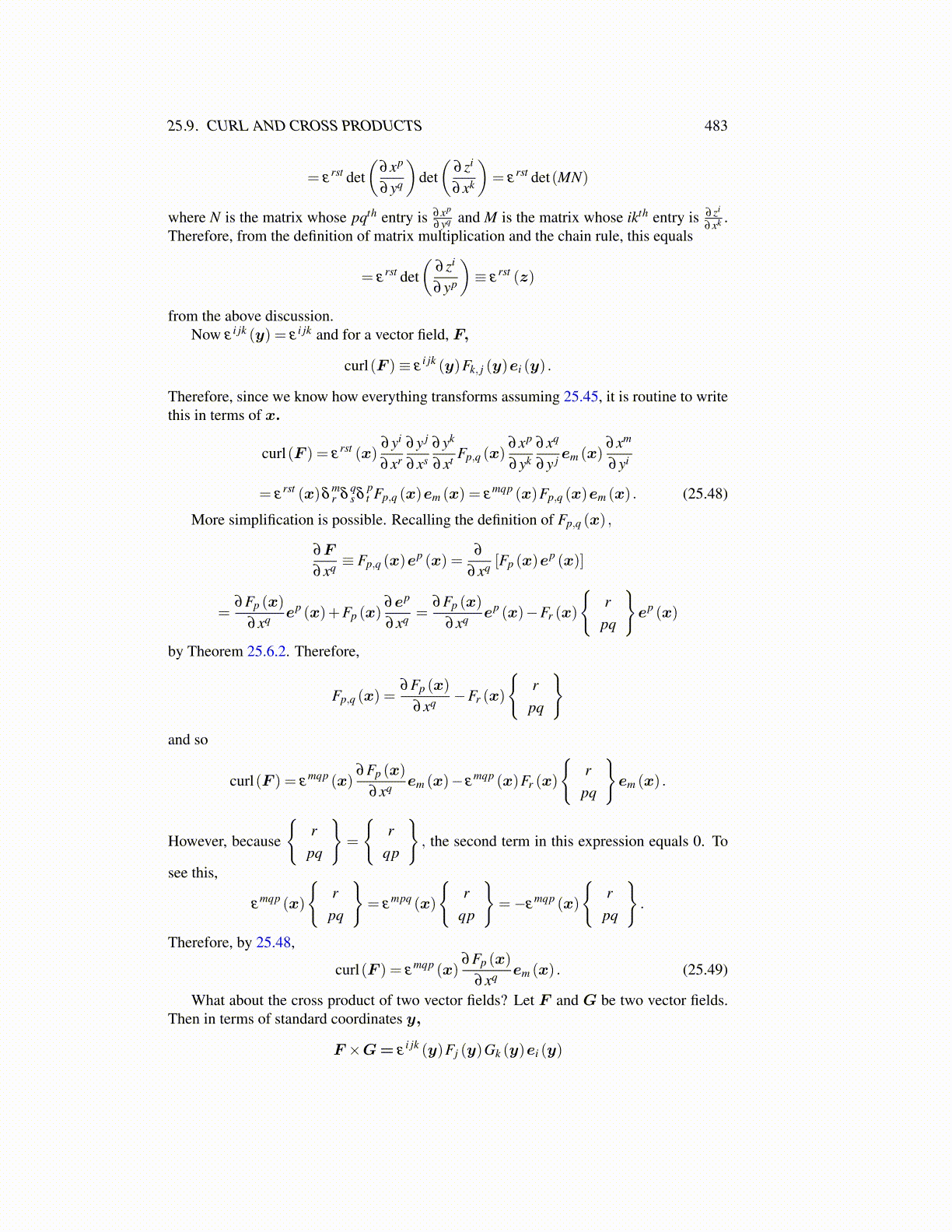
25.9. CURL AND CROSS PRODUCTS 483
= εrst det
(∂xp
∂yq
)det(
∂ zi
∂xk
)= ε
rst det(MN)
where N is the matrix whose pqth entry is ∂xp
∂yq and M is the matrix whose ikth entry is ∂ zi
∂xk .Therefore, from the definition of matrix multiplication and the chain rule, this equals
= εrst det
(∂ zi
∂yp
)≡ ε
rst (z)
from the above discussion.Now ε i jk (y) = ε i jk and for a vector field, F,
curl(F )≡ εi jk (y)Fk, j (y)ei (y) .
Therefore, since we know how everything transforms assuming 25.45, it is routine to writethis in terms of x.
curl(F ) = εrst (x)
∂yi
∂xr∂y j
∂xs∂yk
∂xt Fp,q (x)∂xp
∂yk∂xq
∂y j em (x)∂xm
∂yi
= εrst (x)δ
mr δ
qs δ
pt Fp,q (x)em (x) = ε
mqp (x)Fp,q (x)em (x) . (25.48)
More simplification is possible. Recalling the definition of Fp,q (x) ,
∂F
∂xq ≡ Fp,q (x)ep (x) =
∂
∂xq [Fp (x)ep (x)]
=∂Fp (x)
∂xq ep (x)+Fp (x)∂ep
∂xq =∂Fp (x)
∂xq ep (x)−Fr (x)
{r
pq
}ep (x)
by Theorem 25.6.2. Therefore,
Fp,q (x) =∂Fp (x)
∂xq −Fr (x)
{r
pq
}and so
curl(F ) = εmqp (x)
∂Fp (x)
∂xq em (x)− εmqp (x)Fr (x)
{r
pq
}em (x) .
However, because
{r
pq
}=
{r
qp
}, the second term in this expression equals 0. To
see this,
εmqp (x)
{r
pq
}= ε
mpq (x)
{r
qp
}=−ε
mqp (x)
{r
pq
}.
Therefore, by 25.48,
curl(F ) = εmqp (x)
∂Fp (x)
∂xq em (x) . (25.49)
What about the cross product of two vector fields? Let F and G be two vector fields.Then in terms of standard coordinates y,
F ×G= εi jk (y)Fj (y)Gk (y)ei (y)